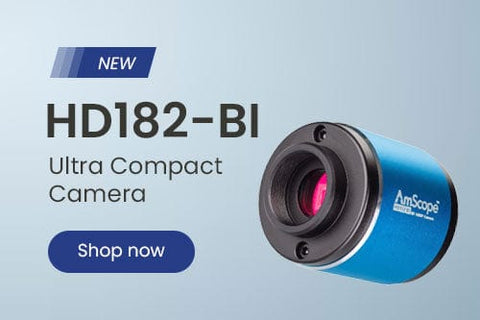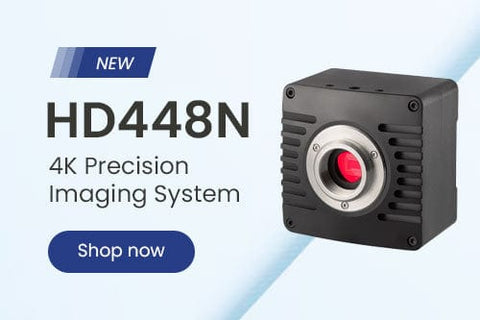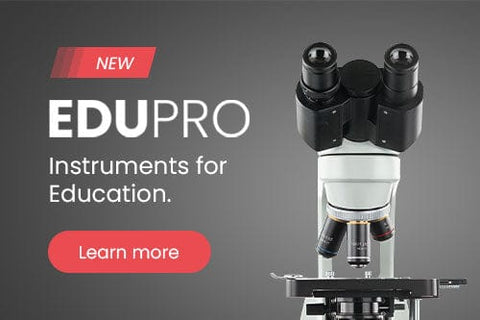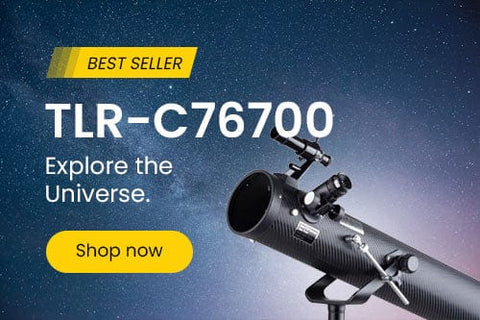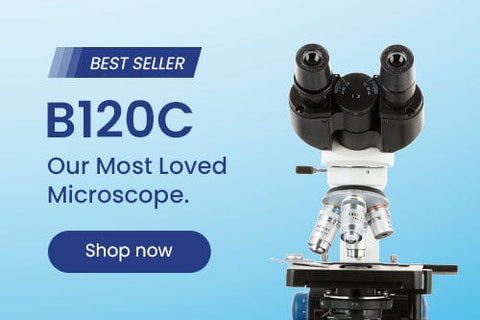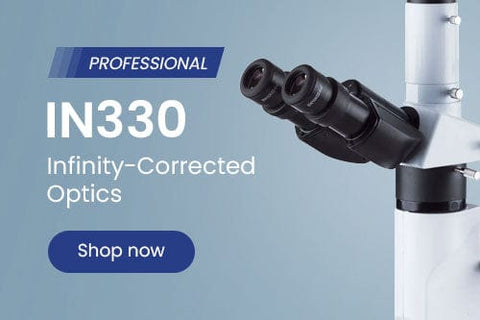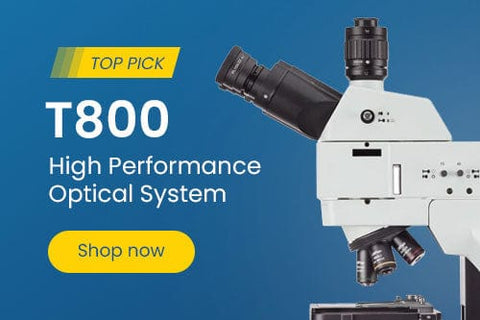- Microscopes
- Cameras
- Lab Supplies & Equipment
- Shop By Brand
- Lab Supplies by Category
- Analyzer Consumables
- Balances
- Bags
- Beakers
- Bench Scale Bases
- Bottles
- Bottletop Burettes
- Bottletop Dispensers
- Boxes
- Blank Microscope Slides & Cover Slips
- Blood Collection
- Caps
- Carboys
- Centrifuges
- Centrifuge Tubes
- Cold Storage
- Containers
- Cryogenic Vials
- Culture Tubes
- Cylinders
- Dispensers
- Digital Dry-Baths
- ESR Products
- False Bottom Tubes
- Flat Bottom
- Funnels
- Gel Documentation
- Glassware
- Glass Test Tubes
- Histology
- Homogenizers
- Hotplates-Stirrers
- Inoculation Loops and Spreaders
- Liquid Handling Products
- Manual-Electronic Pipettors-Pipettes
- Microscope Slides
- Overhead Stirrers
- Pipette Controller (Serological Filller)
- Pipette Tips
- Plastic Test Tubes
- PCR Tubes, Strips & Plates
- Racks
- Repeater Pipettor
- Rockers
- Rotary Evaporators
- Serological Pipettes
- Shakers
- Spectrophotometers
- Syringe Tips
- Sample Tubes
- School/Classroom Supplies
- Screwcap Test Tubes
- Self-Standing
- Test Tube Racks
- Test Tubes & Vials
- Transport & Storage Tubes
- Thermal Mixers
- Transfer Pipets
- Urinalysis
- Vacuum Pumps
- Weighing Dishes
- Lab Equipment
- Balances
- Bench Scale Bases
- Centrifuges
- Digital Dry-Baths
- Gel Documentation
- Homogenizers
- Hotplates-Stirrers
- Overhead Stirrers
- Pipettors
- Rockers
- Rotary Evaporators
- Shakers
- Serological Pipettes
- Spectrophotometers
- Thermal Mixers
- Vacuum Pumps
- Liquid Handling Products
- Manual-Electronic Pipettors-Pipettes
- Pipette Tips
- Racks
- Pipette Fillers-Controllers
- Repeater Pipettor
- Syringe Tips

Cost effective products and solutions designed to improve laboratory efficiency, safety and results.
SHOP BENCHMARK SCIENTIFIC >
- Slides & Accessories
- Slides
- Cameras
- Illuminators
- Adapters
- Eyepieces / Objectives
- Bulbs
- Magnifying Lamps
- Monitors and Tablets
- View All Categories
- Adapters
- DSLR Adapters
- USB Camera Adapters
- Ring Light Adapters
- Power Adapters
- Barlow Lens
- Books & Experiments Cards
- Bags & Cases
- Bags
- Cases
- Cameras
- Circuit Board Holders
- Cleaning Kits
- Condensers
- Darkfield
- Phase Contrast Kits
- Polarizing Kits
- Dust Covers
- Eye-Guards
- Eyepieces
- 20mm
- 23mm
- 30mm
- 30.5mm
- Filters
- Microscope Filters
- Illuminator Filters
- Fluorescence Kits
- Conversion Kits
- Filter Cubes
- Focusing Racks
- Fuses
- Illuminators
- Bulbs
- LED Illuminators
- Fiber Optic Illuminators
- Fluorescent Illuminators
- Ring Lights
- Stand Lights
- Goosenecks
- Gooseneck Attachments
- Immersion Oils
- Loupes
- Magnifying Lamps
- Clamp Lamps
- Desktop Lamps
- Rolling Stand Lamps
- Mechanical Stages
- Monitors and Tablets
- Calibration Slides & Stage Micrometers
- Stage Warmers
- Stain Kits
- Stands
- Articulating Arm Stands
- Boom Stands
- Table Stands
- Tweezers
- Other Accessories
- Shop By Industry
- Shop By Industry
- Botany
- Agronomy & Forestry
- Horticulture
- Phytopathology
- Chemistry
- Biochemistry
- Biotechnology
- Cannabis
- Pharmaceutics
- Consumables
- Beer & Wine
- Cosmetics
- Food & Beverage
- Electronics
- Circuit Boards & General Electronics
- Mobile Phone Repair
- Semiconductors & Wafers
- Environmental
- Asbestos
- Ecosystem Research
- Mud Logging
- Soil Treatment
- Water Treatment
- Forensics
- Ballistics
- Fingerprint Analysis
- Genetic Identification
- Hair & Fiber Analysis
- Handwriting Analysis
- Industrial
- Aerospace
- Automotive
- Dental Lab & Production
- Glass Industry
- Industrial Inspection
- Mechanical Parts
- Paper Industry
- Petrochemical
- Plastics
- Printing Industry
- Quality Assurance & Failure Analysis
- Textiles & Fibers
- Tool Making
- Wood Production
- Jewelry & Gemology
- Engraving
- Gemology
- Jewelry Repair
- Stone Setting
- Watch Repair
- Hobby
- Coins & Collecting
- Stamps
- Modeling & Assembly
- Sculpting
- Repair
- Telescopes
- Metallurgy
- Archaeology
- Geology
- Mining
- Petrology
- Medical & Microbiology
- Anatomopathology
- Bacteriology
- Biochemistry
- Cell Culture
- Cytology
- Dental Microbiology
- Dermatology
- Dissection
- Gout & Rheumatology
- Hair & Fiber Analysis
- Hair Transplant
- Fluorescence
- Hematology & Live Blood Analysis
- Histopathology
- Mycology
- Medical Devices
- Microsurgery
- Neuropathology
- Oncology
- Parasitology
- Pathology
- Semen Analysis
- Virology
- Veterinary & Zoology
- Breeding & Semen Analysis
- Entomology
- Fecal Smears & Floats
- Marine Biology
- Ornithology
- Veterinary Medicine
- Zoology
- Shop By Industry
- Students
- Telescopes
- Buy With Prime
- Sale
- Compound Microscopes
- Shop By Brand
- AmScope
- Euromex
- Omax
- Shop by Head Type
- Binocular
- Monocular
- Trinocular
- Multi-head & Training
- Shop By Specialty
- Brightfield
- Darkfield
- Phase Contrast
- Inverted
- EPIfluorescence
- Polarizing
- Digital Integrated
- Metallurgical
- Shop By Application
- Education
- Research
- Veterinary
- Compound With Digital Head
- Shop Best Sellers
- Shop All Compound
- Stereo Microscopes
- Shop By Brand
- AmScope
- Euromex
- Shop By Objective Type
- Fixed Power
- Zoom Power
- Single Lens
- Common Main Objective
- Shop By Stand Type
- Articulating Arms
- Boom Stands
- Gooseneck Stands
- Table Stands
- Other Stands
- Shop By Head Type
- Binocular
- Monocular
- Trinocular
- Simul-Focal
- Shop By Industry
- Video Inspection
- Industrial Inspection
- Microscope Heads
- Shop Stands
- Articulating Arm
- Boom Stands
- Table Stands
- Stereo With Digital Head
- Shop Best Sellers
- Shop All Stereo
- Specialized Microscopes
- Digital Microscopes
- Kids, Student Microscopes
| AmScope Blogs
Things to look for when choosing a microscope camera
What Is a Microscope Camera Used For?
Previously, scientists had to sketch their microscopic observations on paper. Today, they use microscopes with cameras, as they make the job much simpler and more accurate.
AmScope has a wide selection of microscope cameras, including 4k compatible, high-speed, auto-focus, and USB-connected models. Since the website has everything you could need for microscopy in a teaching, educational, or research environment, it's a one-stop shop for all your needs.
Some applications of microscope cameras include:
- Imaging Live Cells: When scientists study live cells, such as cell movement and shape during mitosis, they need to take pictures at every step. These pictures are later used for further investigations or educational purposes.
- Education: Microscopes with cameras can also be used in schools and colleges to help students understand scientific concepts more clearly.
- Forensic Science: Forensic experts have to present photographic evidence in court. In cases where microscopic evidence is found, cameras for microscopes come in handy to ease the reporting process.
Ultimate Guide to Choosing a Microscope Cameras
When shopping for a microscope camera, you should know about the different features that distinguish one camera from the other. Here are some factors to keep in mind when choosing cameras for microscopes:
Type
Microscope cameras are available in different types, based on their connections and prices.
1. USB Microscope Camera
The USB microscope camera is connected to the c-mount adapter on the eyepiece of the microscope. It connects directly with the laptop or the computer through a USB connection.
These cameras have built-in software that allows you to view what you see under the microscope on the computer screen. The software can also capture video and images. Depending on the camera's functionality, it may also allow you to make measurements on the images.
For example, the AmScope 10MP USB 2.0 Color CMOS C-mount Microscope Camera with Reduction Lens has sophisticated software that allows you to edit and process pictures. The software also has advanced measurements and stitching functions.
A USB microscope camera is perfect for educational settings, quality control work, and fluorescence work. The downside to using a USB microscope camera, however, is its slow frame rate. You cannot use these cameras for real-time viewing since there is a lag between image capture and the cell's movement under the microscope.
2. 4k Microscope Cameras
These are high-definition cameras that provide a crisp image at a fast frame rate. They directly connect to the computer's monitor with an HDMI cable. You simply press a button on the camera and it captures the image directly to a USB flash drive or an SD card inserted in the camera.
Pathologists most commonly use 4k microscope cameras since they need high-quality pictures of cells to determine their physiology. The downside of these cameras is that you typically need to press a button to capture a picture. Also, the SD card or the flash drive has to be inserted into the computer to do any measurements or other work.
AmScope's 4K BSI CMOS C-mount Microscope Camera for Stand-alone and PC Imaging is remarkable in this regard. It allows you to capture 4k images and videos. Plus, you can use advanced Windows software to process and edit the data. Since it also supports stand-alone operation, you can capture videos and images without a computer.
3. Tablet Microscope Cameras
Tablet microscope cameras are advanced, tablet-like devices that can be mounted onto the microscope. They allow you to view live images without having to look under the microscope. You can find these cameras in basic and HD functionalities.
The main benefit of using this camera is that it goes directly atop the microscope. Plus, technicians can view the images without straining their eyes, which is a common shortcoming of cameras — you have to keep shifting your optical focus from the microscope to the computer. However, tablet microscope cameras have a slight downside too. They typically have lower image quality and a slower frame rate. Thus, they are better for educational purposes, rather than professional use.
The AmScope 9.7" Touchscreen 5MP Imaging System allows you to convert your analog microscope into a digital imaging system. You can easily use the tablet's built-in Wi-Fi to connect to your network and share files with your co-workers. Moreover, you can capture videos and images in industry-standard formats and save them to external USB devices or internal storage.
4. Wi-Fi Microscope Cameras
A Wi-Fi microscope camera connects to the microscope, creating its personal Wi-Fi signal. You have to download an app on your tablet or phone, and can then use this app to view live videos and images from the microscope.
The significant benefit of this microscope is that you can conveniently see images on your phone. The Wi-Fi range extends to 30 feet in some cases, allowing you to view microscopic images from anywhere in your lab. However, the resolution and frame rate of Wi-Fi cameras is not very high. If you need a microscope camera for educational purposes, this is one of the best types for your needs — but it may not be the best for professional research.
The AmScope CMOS Auto-focus C-mount Microscope Camera is perfect for teaching and mid-tier research work. It has internal auto-focus and captures images at 25 frames per second.
Elements of Image Quality
Besides the type of microscope camera, you also have to consider the image quality. Here are some determinants of image quality in a microscope camera.
Pixel Size
One important thing to consider is the pixel size, which is the size of the individual photodetector. The pixel size determines the sensor's spatial resolution limit.
For any magnification, the smaller the pixel size, the finer the features of the image will be. When pixels get smaller, their photon capacity decreases. It is the measure of the number of photons that can pass through without saturating the pixel.
Therefore, smaller pixel sizes have a lower dynamic range and low signal-to-noise ratios. Typically, a high-resolution camera with a pixel size of 6.5 µm should give sufficient resolution with a considerable dynamic range.
Resolution
Resolution is usually defined as the number of megapixels in one inch of the system. To get the best resolution, you need to consider the:
- Optical systems' total magnification
- Spatial frequency of the sample
- Numerical aperture
- Pixel pitch
The resolution you opt for will depend on why you need the microscope camera. For instance, if you intend to use it in industrial settings, you should opt for a higher sampling pitch since industrial samples have higher spatial frequencies and sharp edges.
Frame Rate
Frame rate refers to the number of frames a camera captures in a second. When using digital microscopes with cameras, you can adjust the frame rate up to a specific limit.
Meanwhile, CMOS cameras have more advantages in this regard since their maximum frame rates are faster than other cameras. Keep in mind that as you speed up the frame rate, the exposure time is lowered. Thus, there is a decrease in the signal-to-noise ratio.
Quantum Efficiency
The quantum efficiency of a camera describes how effectively the photons of light are converted to charge. If every photon converts to an electron, the quantum efficiency of the system will be 100%.
However, there is no uniformity in the QE of a sensor across a spectrum. CMOS and CCD detectors have less quantum efficiency towards the end of the wavelength range. The maximum QE value you will most likely see on a camera is 0.6.
Color Reproduction
The spectral response of the camera sensors differs from that of the human eye. Therefore, camera manufacturers use many techniques to ensure that the colors on the computer screen are similar to what you see under the microscope.
Some features to look for in this regard are:
- White Balance: Look for a microscope camera that has proper white balance. The feature detects the bright background automatically and fixes it, saving you from tedious manual operation and adjustments.
- Multi-Axis Color Adjustment: This feature allows the camera to optimize colors for different stains. For instance, it can accurately differentiate between red and brown stains to show them independently in the image.
- Color Spacing and Matching: These features are also important since they allow the camera to express a wide selection of colors, which is vital for vivid greens, like the Masson's trichrome stain.
CCD, EMCCD, or sCMOS?
A modern digital microscope camera falls into one of the three categories discussed below:
- CCD: The charge-coupled device camera has been the most advanced imaging sensor in science for the past few years. The sensor in this camera has a 2D grid of capacitors made of a metal-oxide-semiconductor. The capacitors gather the photons, converting them into electrical current. Finally, the electrical current is read out in a signal output to form a picture.
- CMOS: CMOS sensors are present in modern cameras. The complementary metal-oxide-semiconductor sensors are also called active-pixel sensors. They are more complicated than the sensors in CCD cameras. Each pixel has tiny transistors and a photodiode to amplify the electrical signal generated due to the passage of photons. Since these cameras are faster than CCD, they can be used in research-based settings where you need a higher dynamic range and faster video frame rates.
- EMCCD: The Electron Multiplying CCD cameras have an image sensor that can quantify and detect single-photon events even without an image intensifier. Regular CCD cameras have a lower bandwidth, but EMCCD cameras have remarkable sensitivity at high speeds.
Separate Cameras or Digital Integrated Microscope?
If you do not want to buy stand-alone cameras, you can also invest in microscopes readily accessorized with monitors and tablets that let you view specimens in real-time. You do not need any additional equipment to use these microscopes.
AmScope has a comprehensive range of digital microscopes with integrated monitors and cameras. These microscopes are great for educational settings, training, industrial inspections, and quality control. Likewise, digital integrated microscopes feature ergonomic designs. Their build and design prevent damage to the camera and lenses of a microscope. These cameras are perfect for classrooms and other educational settings where theft prevention is a necessity for all equipment.
The 40X-2000X Infinity-corrected 5MP Digital Integrated Microscope from AmScope is ideal for higher education, clinics, and vets. It has a built-in 5MP camera that allows you to capture and stream live images on your computer.
Meanwhile, the 40X-2000X 3MP Digital Integrated Microscope with Halogen Illumination comes with two sets of eyepieces and four objective lenses. It uses warm halogen as a light source, which reduces eye strain and enhances illumination.
Choose which option suits you best based on your individual microscope and camera needs. If you have a microscope camera adapter or are comfortable with using one, you can select a separate 4k or USB camera. But if you want an all-in-one, cost-effective solution, digital integrated microscopes are the way to go.
Final Words
When choosing a microscope camera, look for its inherent features, the purpose you need to use the microscope for, and the critical elements of image quality.
AmScope has an impressive selection of digital integrated microscopes, available at different prices with varying resolutions and light sources. These cameras allow you to view your specimen in real-time and make accurate observations. They also make the process of sharing and sending information to colleagues more streamlined and straightforward.
If you found this guide helpful and are ready to make a find the right camera, AmScope is the best place to find lab equipment for microscopy purposes.
Free Shipping on orders $149+
Same day shipping for orders within the contiguous U.S.
Easy Returns
Hassle-free 30-day return policy. 100% satisfaction guarantee.
Quality Products
5-year warranty on AmScope microscopes.
Got a question?
Speak to our team of experts and find the products you need.
